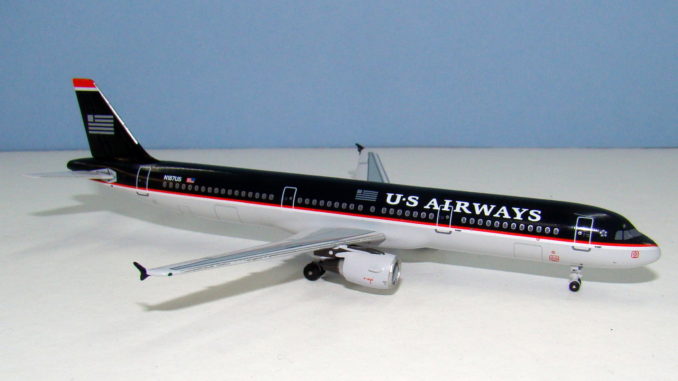
I don’t acquire large numbers of Aeroclassics BabyBuses since my only modern collection areas are Chinese and Russian. Even so the A321 is getting old enough now that some earlier examples of it seem almost classic. This US Airways release for example only just tops my US Airways fleet and gives me a chance to review the longest member of the A320 family on the Aeroclassics mould.
THE REAL THING
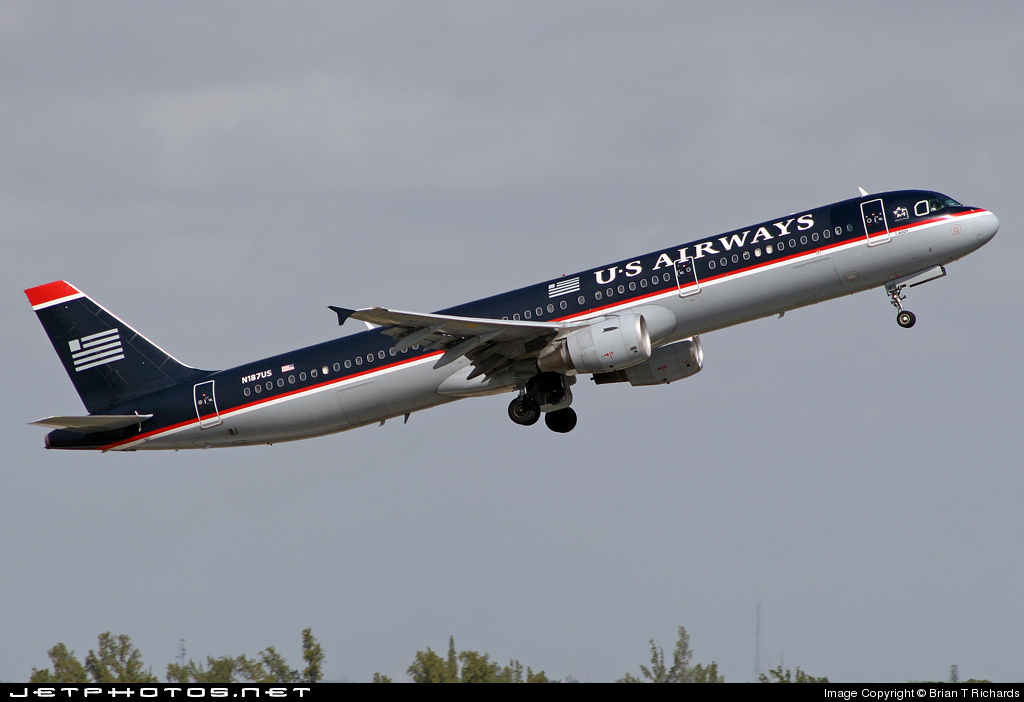
USAir was one of deregulation’s darlings during the 1980s but the acquisition of both Piedmont Airlines and PSA during the merger mania of that decade, neither of which were smooth, plus the economic troubles of the early 90s made a severe dent in both the airline’s image and profitability. In fact between 1988 and 1994 USAir lost more than $3 billion partly due to its high cost base. By 1995 it had returned to profit and following the retirement of the previous CEO, after failing to gain labour concessions, the airline hired Steven Wolf as its new CEO.
Wolf was known as a turnaround specialist having worked with Republic, Flying Tigers and United. He repositioned the airline, which was now a major international as well as domestic carrier, and it unveiled on February 27, 1997 a change of name and image as it became US Airways.
Hand in hand with the brand change was fleet replenishment with a massive order for 400 Airbus narrowbodies made in November 1996 for first delivery in 1998. The aim was to begin replacement of the varied fleet of Douglas DC-9s, Boeing 727s, 737 Classic and Fokker 100s.
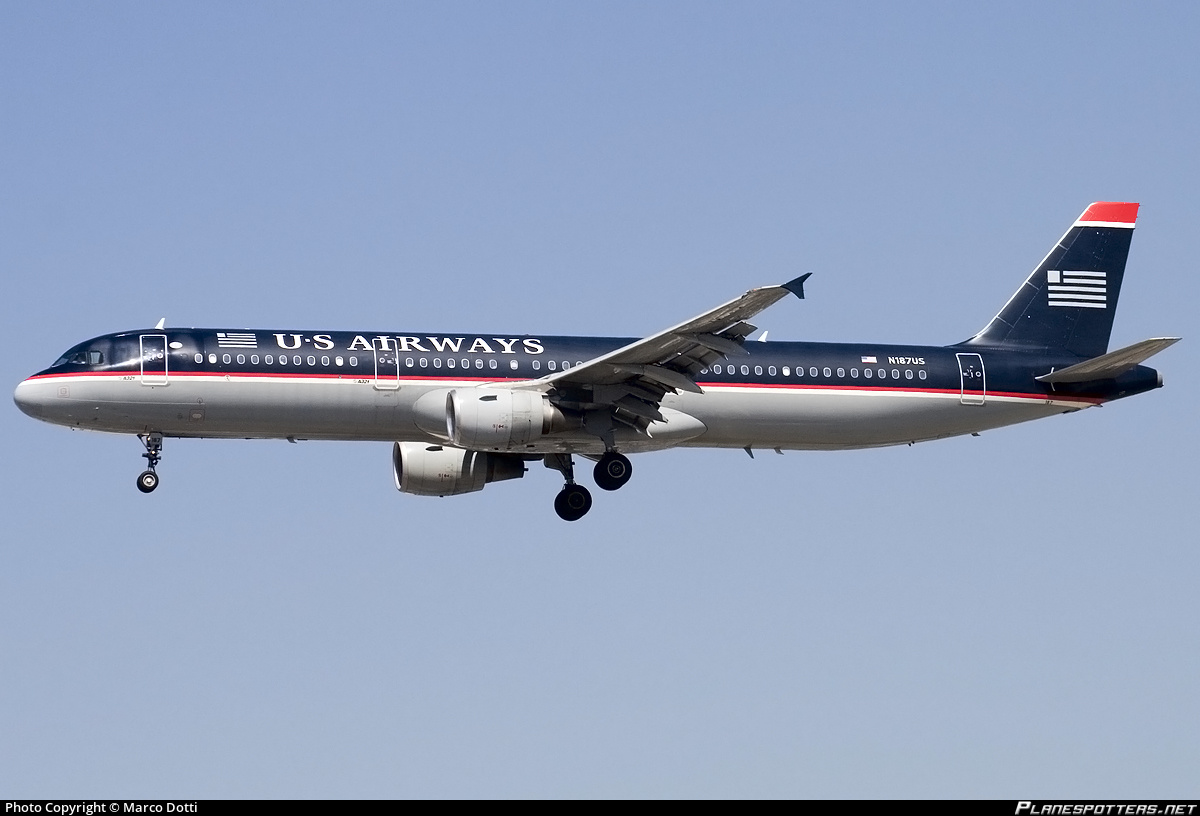
The first A320 family aircraft joined the fleet in October 1998 as N700UW, an Airbus A319-112, was delivered. A320s followed in May 1999 and the largest member of the family, the A321, began joining the fleet in January 2001. Despite the new arrivals US Airways continued to lurch from one disaster to the next. A merger attempt with United failed in July 2001 and then the 9/11 attacks had a disproportionate impact on US due to its hub at Washington National, which was closed for an extended period.
The result of the September attacks was bankruptcy protection and a major contraction of operations at several hubs. During this period N187US was delivered new from Airbus where she had first flown as D-AVZE on November 3, 2002. In the next few years US Airways would enter bankruptcy again, be taken over by America West (although keep its name) and finally in 2015 be merged into American Airlines and lose its identity. N187US continues to be an active part of the American Airlines fleet.
THE MODEL
The format for my reviews is to split them into three key areas:
- The mould of the aircraft
- The paint and livery
- Printing and quality control
Each can get a maximum score of 10 for a section giving a maximum combined total score of 30.
THE MOULD
Hands down the Aeroclassics Airbus A321 is the best available in 1:400 scale that I have seen. There is a new HYJLwings A321 mould floating about but it isn’t widely available and I haven’t seen it in person so any comparisons will have to wait.
Pleasingly the Aeroclassics A321 does not have some of the issues that are present on the smaller BabyBus moulds by the same manufacturer. Chief amongst these is the length of the nosegear and size of the nosegear tyre. Whilst the components are the same on this mould as for the A319 and A320 the extra length of the fuselage mitigates the nose down attitude that can be seen on the shorter buses, especially the A319.
Additionally unlike on the Phoenix A321 Aeroclassics have, at least for the original winglet version of the mould (the Sharklet version is incorrect), noticed that the A321 wing is not the same as that of the A320. This wing, beautifully realized, comes with all the extra flap tracks that come from the A321 having more complicated double slotted flaps.
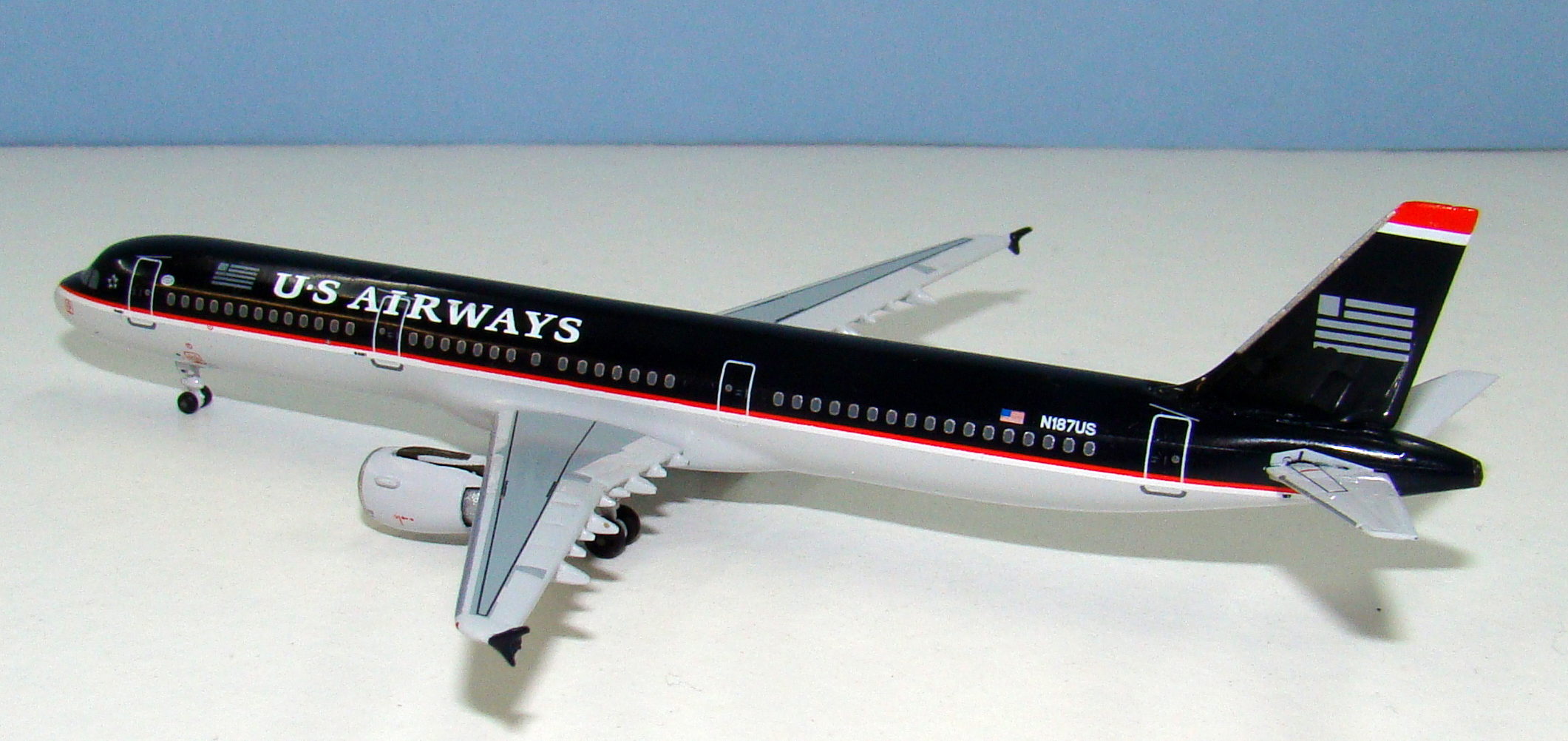
All in all aside from the customary lack of aerials this is effectively a near perfect mould. However the combination of no aerials and the nosegear tyre means I am still docking a single point.
SCORE – 9
PAINT & LIVERY
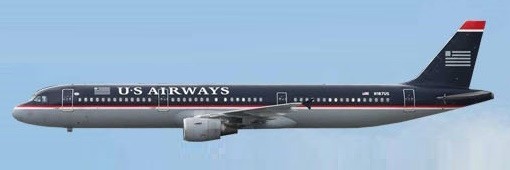
The 1997 livery introduced a business like corporate identity with a stylized US flag on the tail, deep blue crowned fuselage with a medium grey belly and red and white lines between the two. The scheme looked very dark and has become known by some as the ‘Darth Vader’ livery. The livery must have been expensive but looked smart, at least when applied. As with many dark liveries fading was an issue and the 2005 merger with America West saw it replaced with a white crowned scheme partly due to the Phoenix and Las Vegas hubs of America West presenting heating issues for aircraft wearing such a dark livery.
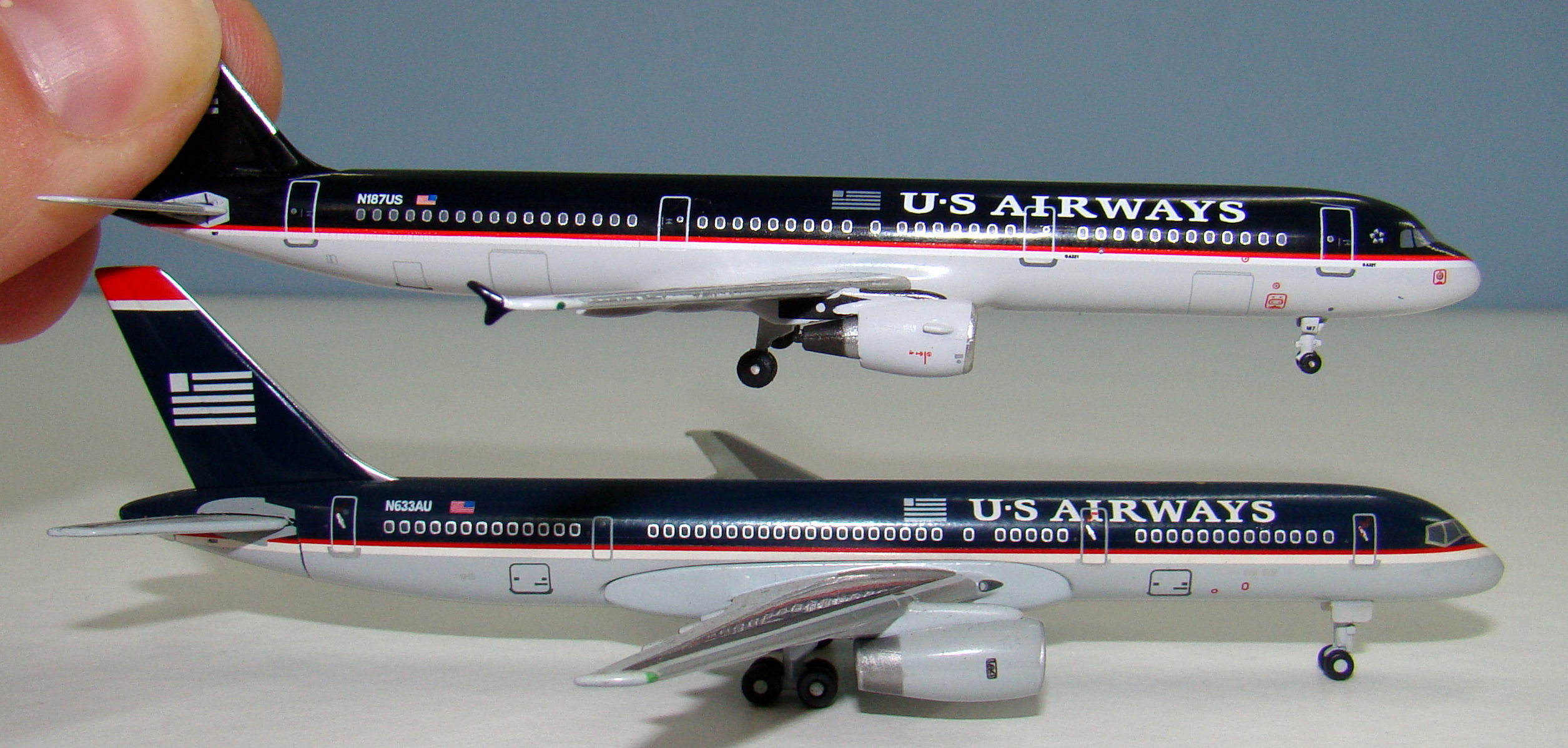
I always struggle to tell what colour the fuselage is on this livery. It certainly is very dark but in certain lights it does have a hint of blue. Most of the time it looks black and certainly Aeroclassics think it does as the model is basically black. I’ve compared to other US Airways models I own in this scheme and my Gemini 757 definitely has a more blueish tone to it, whilst the Gemini 737 looks equally black. In the end the model is black when it should be blue but I sympathise a little.
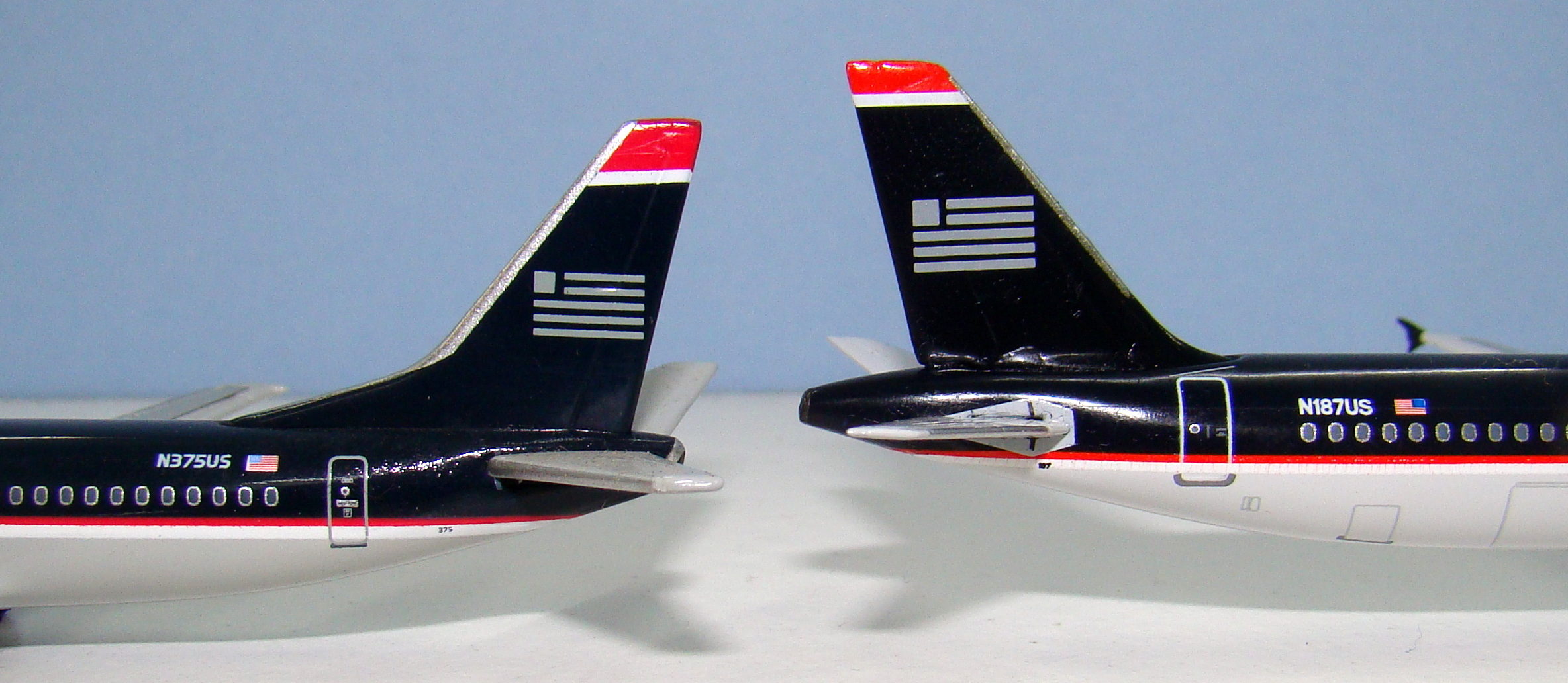
The rest of the livery is admirable. The aircraft wears the Star Alliance logo forward (US was a member for just over a decade from 2003-March 2014) and also has the US heritage logo just after the L1 door. The placement of other elements and font of the titles is fine, although the grey of the US flag may again be a shade too dark.
SCORE – 9
PRINTING & QUALITY CONTROL
Printing on the model is mainly up to the usual Aeroclassics standard i.e. pretty good but not exceptional. The important things are there but there is no hint of the aerials, even in print, and none of the more detailed panelling lines that JC Wings say would apply. The engines in particular are rather blandly grey. It is also worth mentioning that the root of the horizontal stabilisers is grey whilst all the photos I see show that US painted them blue. Also be careful you are not blinded by the bright silver engine fanblades.
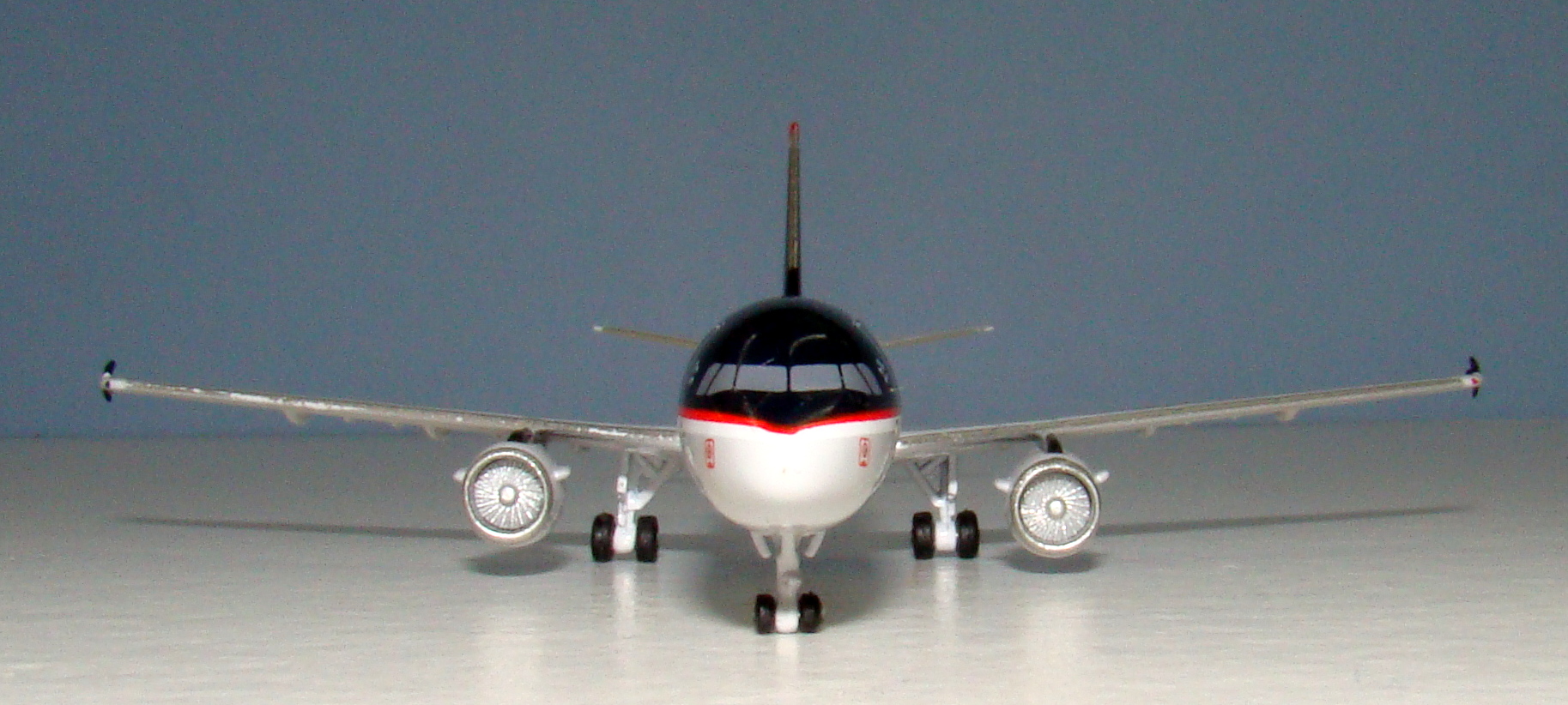
Unfortunately this model comes with a rather obvious and unpleasant printing defect. The large US flag on the tail on the left side has two chunks missing from its lower edge. It is almost as if someone has taken two bites out of the flag. I’m guessing this was damage in the factory but is another example of some poor print finishing standards at Aeroclassics of recent.
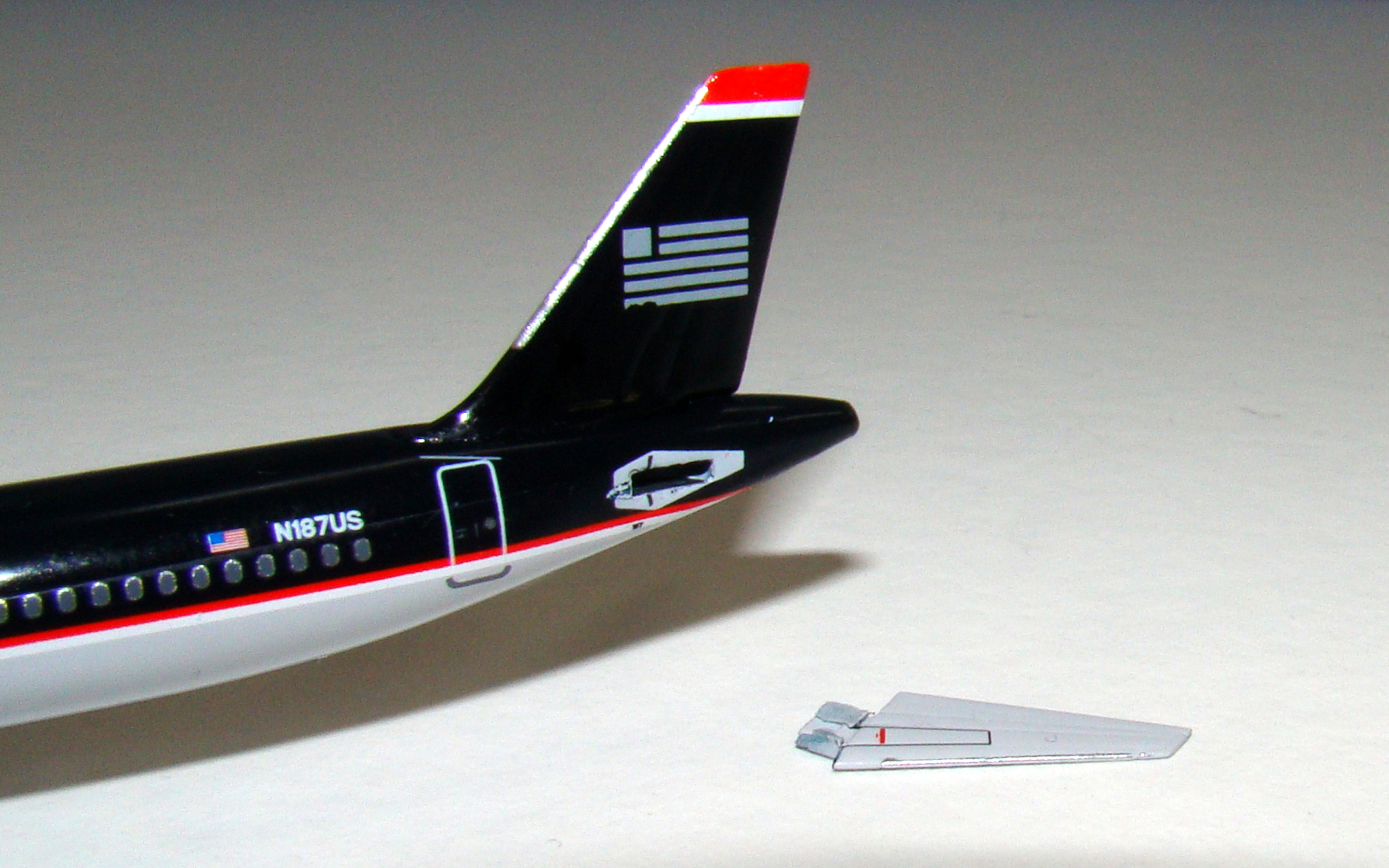
Construction quality of the model likewise would be excellent if not for one decent sized defect. The model arrived with the left side horizontal stabiliser unattached, whilst the right side is also very moveable and almost unattached. Fortunately neither of these moveable pieces has damaged the model. You can see that some glue was used on the offending pieces but it obviously wasn’t enough. Both stabs can be reattached with no visible damage so I guess I should be grateful.
This model is let down across the board in this category.
SCORE – 6
CONCLUSION
I swear I am not picking Aeroclassics models with issues to review. In fact I only got this model because I had heard such good things about it. As has been the case with both of this years earlier Aeroclassics reviews there is an exceptional model trying to get out with this release but once again it is smothered by failings that suggest a lack of care at the factory. It goes from being a great model to one that I would struggle to sell on.
FINAL SCORE – 24/30


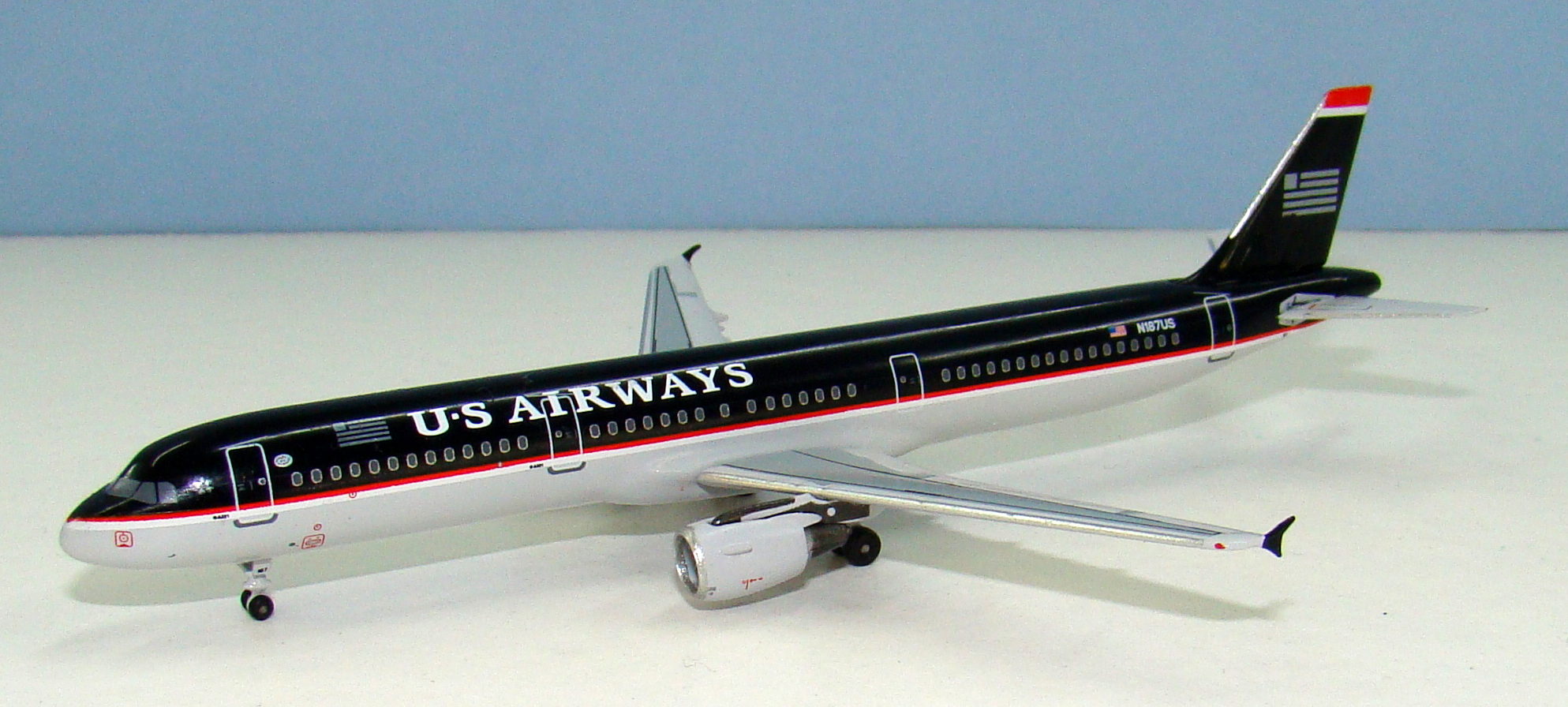
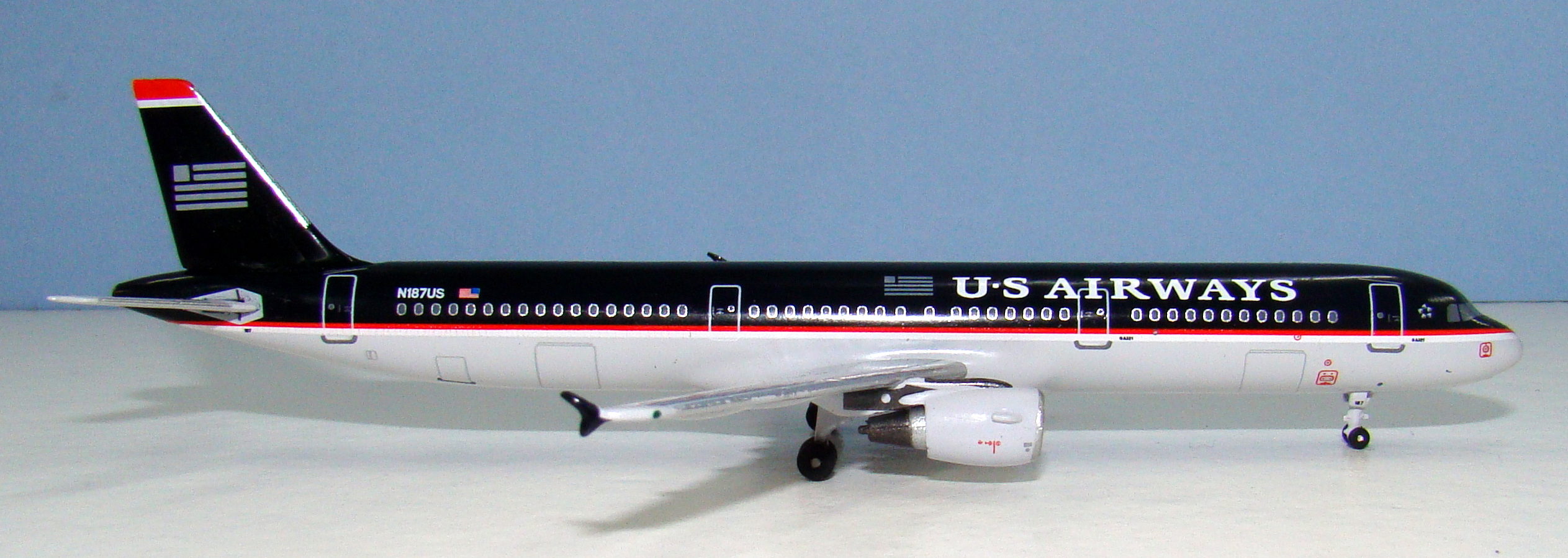


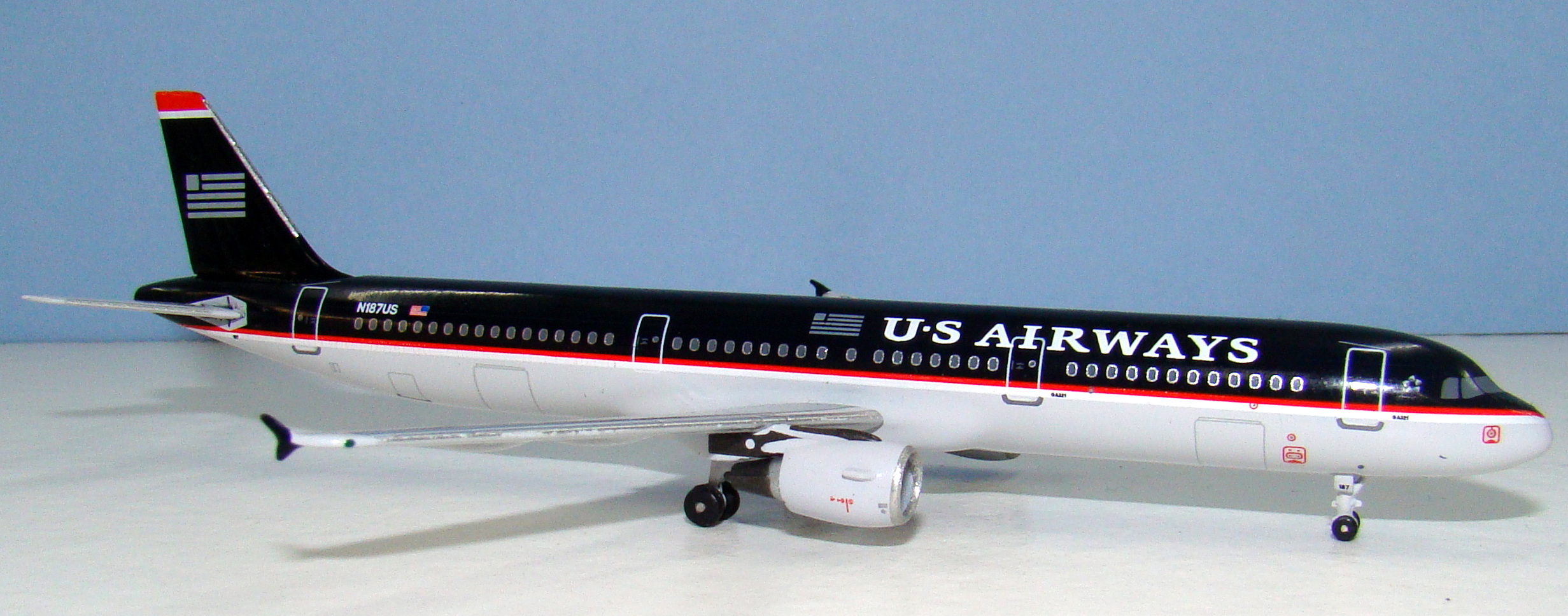
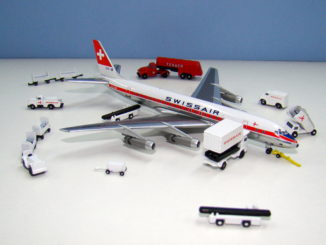
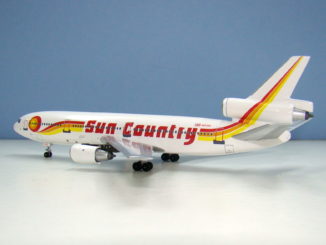
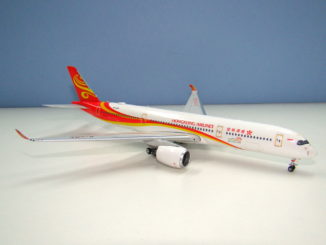
I spent a decade of my life seeing this livery close up at DCA, ROC, BWI, and lots of airports elsewhere. Your assessment of both the blue and gray is correct. The navy blue was definitely blue, not black. AC continues to need to work on blues. And the underside is a darker, and more bluish, gray than Aeroclassics has applied. Gemini got these colors more correct.
Still, a very welcome addition to my collection, mainly because it was the largest aircraft US Airways scheduled to my home airport, ROC. In the early-to-mid-00’s, PHL was the main hub, and they flew the largest aircraft from ROC to there, and Rochester’s economy had not hit the harder skids of the later decade.
Very good and careful history about USAir / US Airways after Deregulation. Stephen Wolf was rumored to be hired to prepare airlines for merger, and to paint them at least partly gray before he did. He did that with United (though, as you note, that merger didn’t happen), Republic (the Mary Tyler Moore scheme with the gray belly) and US Airways (The Darth Vader scheme which was the reverse of UA).
Jim